CHAPTER 21: MENTAL EXERCISE FOR MENTAL FITNESS
Knowing your own mind
is the solution to all our problems.
– Lama Thubren Yeshe, Tibetan Monk
Did you physically work out today — do some exercises, take a long walk, go swimming, play a sport, ride your bike?
Did you mentally work out today — do a crossword puzzle, solve any riddles, play any word games?
Did you know that mental exercise is as important to your mind-body health as physical exercise?
So, what are the benefits of mental exercises? For one thing, exercising your brain will increase your creative or lateral thinking capabilities.
— ♦ —
Think about this: what would you do if you were on your way to school or to work and the road was closed because of an accident? There is no one there to direct you around the barricade — no one to tell you how to get to where you are trying to go.
What do you do? Are you going to just sit there until the road opens up again? Or, are you going to turn around and go home? Or, are you going to figure out how to get from where you are to where you need to be?
— ♦ —
Need Help With Problem-Solving?
In my classes, I use mental exercises to help develop my students’ problem-solving skills..
Optical illusions can be used to illustrate that things are not always as they appear to be. Sometimes you have to look closely to understand — to see what something really is — you have to dig a little deeper to see the truth, pay close attention to the details. Illusions are a wonderful tool to illustrate perspective — that sometimes you just need to change the way you look at something to better understand it.
A few examples of typical optical illusions:
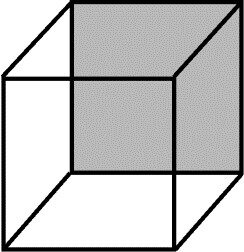
This illusion is based on the concept of a Necker’s Cube. Can you tell if the shaded area of this cube is located at the front or the back of the cube? Based on where you focus your attention, the shaded area could be at the front or the back.
— ♦ —
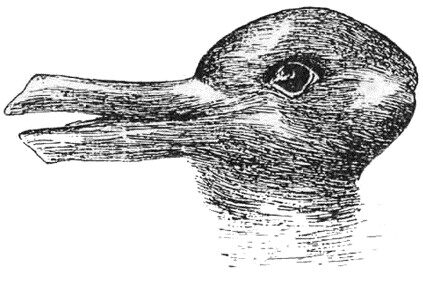
What is this — do you see a duck or a rabbit?
When you look at this illustration, your brain is going back and forth between recognizing this as a rabbit and a duck.
This is an ambiguous figure, meaning it’s both.
This duck-rabbit illusion was created by psychologist Joseph Jastrow in the late 1800s, along with the next illusion, commonly referred to as the Jastrow Illusion.
— ♦ —
Can you tell which of the figures is wider — shape A or B?
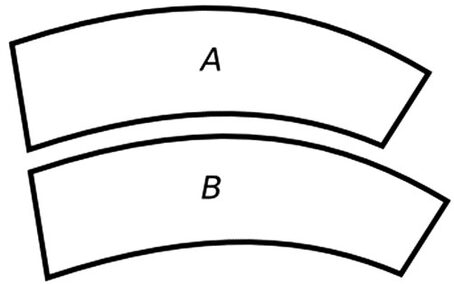
The two figures are identical in size, even though the lower one appears to be larger.
— ♦ —
Illusions, in particular, show students that they can be misled, that sometimes they need additional information to solve a problem, that they can be fooled by what they see — and, that they should not jump to conclusions.
Here’s an example of why you should try not to jump to conclusions until you get all the information — picture this:
You walk into a room where your best friend is sitting next to your boy/girl-friend, and they seem to be discussing something that’s very private. Their heads are close together, and they are both smiling.
You jump to the conclusion that they are plotting against you, or that your best friend is making moves on your boy/girl-friend. Because you are a teenager, you respond emotionally.
You yell at them, and call them names.
Mortified by your behavior, they yell back at you and call you names. Your boy/girl-friend storms out of the room and your best friend follows.
The reality: they were planning a surprise birthday party for you because they both love you so much.
By training yourself to think before you react — to look more deeply at situations — you learn to see alternative options.
— ♦ —
I also like to use word games, puzzles, brain teasers, and riddles to exercise students’ brains, and to encourage them to work together to solve problems.
Someone may come up with an answer that is incorrect, but their answer sparks an idea in someone else’s mind who comes with another answer. They work together, and eventually someone will come up with the right answer.
Mental exercises also illustrate that sometimes we learn what doesn’t work (remember that chapter on “mistakes” and “happy accidents?”).
Exercising your brain by doing any type of mental exercises will condition you to think outside the box, to look at things in an alternative way, and will help you to be able to come up with solutions to problems.
— ♦ —
STUDENT CHALLENGE!
So, let’s think outside the box!
I have a challenge for you.
Get out a piece of paper and put four dots on it, like corners of a box. It should look like this:
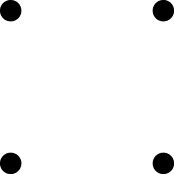
Now, here’s the challenge: Using only three straight lines, connect all four of these dots that kind of look like corners of a box. The tricky part — all three lines must touch another line on each end, they must be straight, and they cannot cross each other.
Take just a few minutes to solve this puzzle.
Need a hint?
I have planted an image of a box in your subconscious mind. By mentioning the word “box” a few times, and telling you the dots are like corners of a box, you now have a mental boundary that has been established. You are trying to fit the three lines inside that boundary, aren’t you?
Remember what I said — think outside the box.
Need another hint?
Let’s think geometry. Think of a three-sided shape.
A triangle, right? How can you apply that information to help solve the puzzle?
Don’t give up too quickly!
Mental exercises help to improve your critical thinking skills. When you are trying to solve problems, it may help to break the problem into smaller pieces and solve each piece. Sometimes the best approach is to eliminate what is not possible. Then, think of other options — what is possible?
— ♦ —
STUDENT ACTIVITY
Find some brain teasers, riddles, word puzzles, number puzzles, etc. either in books or online. Work alone, or with friends, and see how many of these problems you can solve. Try to do some sort of mental exercise every day!
So! What Did You Do With Those Four Dots?
Is this the solution you came up with (or a variation of this)?
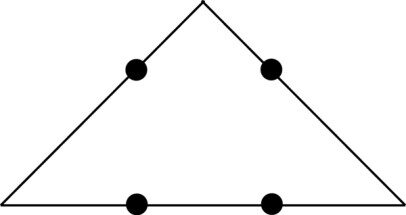
Life will try to place boundaries around you — try to box you in with limitations. Learn to break those boundaries in your life; learn to think outside the box!
— ♦ —
THINK TIME:
How has what you have seen distracted you,
misled you, or fooled you in the past?
PART TWO
THE HOWs and WHYs
and OTHER LESSONS
Science is not only compatible with spirituality;
it is a profound source
of spirituality.
– Carl Sagan,
scientist / astronomer